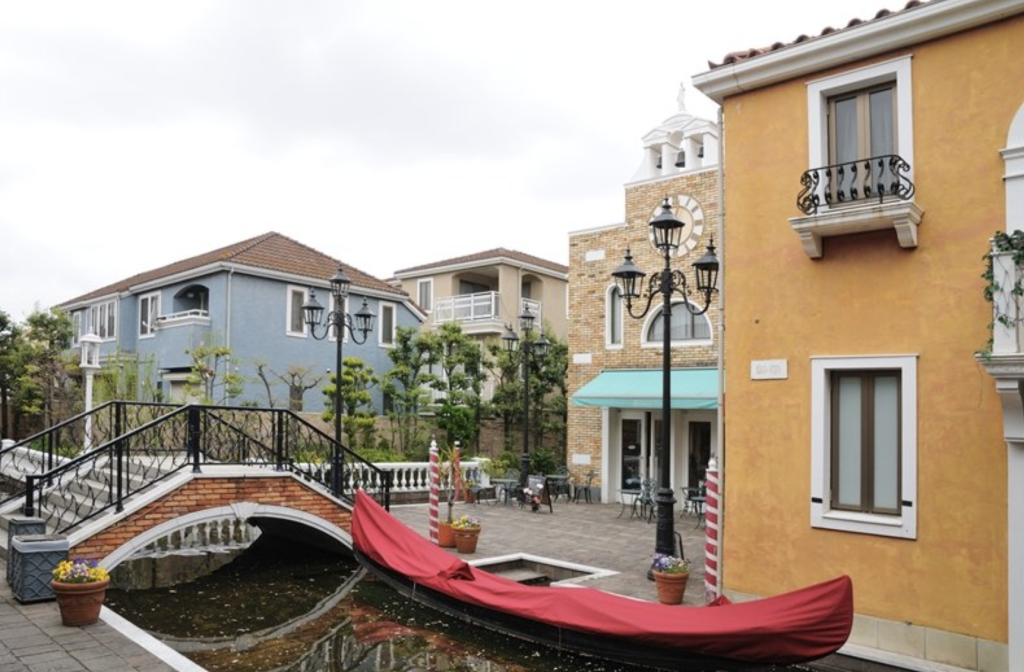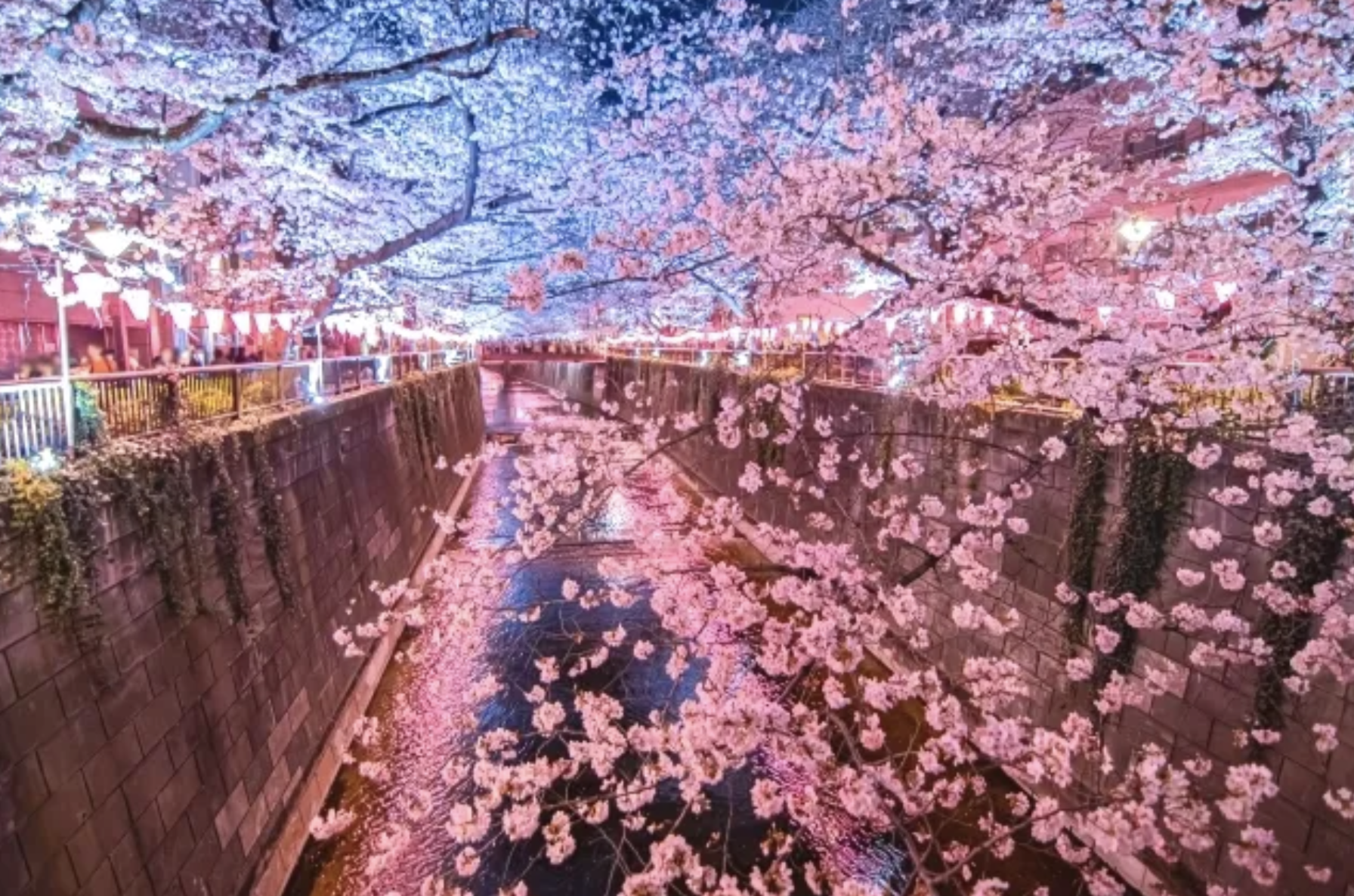Chapter 1: Jiyugaoka – Tokyo’s “Little Europe”
1. Aesthetic Appeal and Atmosphere
Jiyugaoka lies in Meguro Ward, a short train ride from Shibuya. Unlike the concrete canyons of central Tokyo, Jiyugaoka charms visitors with tree-lined avenues, cobblestone-style pedestrian zones, and pastel-colored boutiques. The district’s nickname—Tokyo’s Little Europe—is no accident. From French patisseries to Italian gelato shops, the area evokes a continental vibe.
Foreign residents are drawn to this sense of openness. Wide sidewalks and human-scale buildings make the district walkable and family-friendly. On weekends, couples stroll past bakeries like Mont Blanc, one of Japan’s first specialty cake shops, while students gather in European-style cafés.
2. Daily Life for Foreign Residents
For expatriates with families, Jiyugaoka offers a balanced lifestyle. Supermarkets such as Peacock, Ozeki, and Seijo Ishii provide both Japanese staples and imported goods. International schools are accessible within a short commute, and English-speaking pediatricians and dental clinics can be found nearby. The atmosphere is suburban without being isolated.
Foreign professionals often praise Jiyugaoka for its “slow Tokyo” lifestyle. While central Tokyo demands long commutes and fast-paced schedules, Jiyugaoka offers tranquility. Remote workers, entrepreneurs, and creatives particularly enjoy its café scene, which encourages lingering with a laptop.
3. Housing Market and Rent Levels
Housing in Jiyugaoka tends to be spacious by Tokyo standards. Low-rise apartment buildings and family-sized condominiums dominate. Rent, however, reflects the area’s prestige.
- One-bedroom apartments: ¥150,000–¥180,000 per month
- Two-bedroom units: ¥200,000–¥250,000 per month
- Detached houses (rare but available): upwards of ¥300,000
For foreigners seeking long-term stability, Jiyugaoka’s housing stock is attractive. Many properties are newer, with modern facilities, and landlords here are often accustomed to international tenants.
4. Accessibility
Jiyugaoka Station sits on both the Tokyu Toyoko Line and the Oimachi Line. From here:
- Shibuya: 10 minutes
- Yokohama: 20 minutes
- Shinjuku (via Shibuya transfer): 25 minutes
This makes Jiyugaoka an ideal base for professionals commuting to central business districts, while still enjoying a quieter residential setting.
5. Lifestyle by Time of Day
- Morning: Cafés open early, catering to commuters and freelancers.
- Afternoon: Boutiques and patisseries attract shoppers. Parks and community centers host family activities.
- Evening: Upscale izakayas and European-style wine bars fill with both Japanese professionals and expats.
6. Why Foreigners Choose Jiyugaoka
In essence, Jiyugaoka offers comfort. It is safe, stylish, and family-oriented. Foreigners who want a predictable, cosmopolitan Tokyo life without the chaos of central districts find it ideal.
Chapter 2: Nakameguro – Creative Energy by the Meguro River
1. A Neighborhood with Global Recognition
Nakameguro has rapidly gained international fame, especially after global media began featuring the Meguro River cherry blossoms. Every spring, thousands of visitors walk beneath the pink canopy, sipping sparkling wine sold at riverside stalls. For foreign residents, living here means daily access to one of Tokyo’s most iconic seasonal experiences.
But cherry blossoms are only part of the story. Nakameguro embodies Tokyo’s creative spirit. Former warehouse spaces have been converted into cafés, art galleries, and fashion boutiques. The area under the elevated railway, known as Nakameguro Koukashita, is now a trendy stretch filled with design shops, craft beer bars, and concept stores.
2. Daily Life in Nakameguro
Foreigners who choose Nakameguro tend to be younger—students, entrepreneurs, digital nomads, and those in creative industries. Cafés with free Wi-Fi double as workspaces, while international restaurants (Mexican, Italian, American diners) ensure that residents never feel too far from home.
Supermarkets like Life and Peacock stock imported goods, and convenience stores are on every corner. For exercise, the riverbank paths invite jogging and cycling. Social life often revolves around casual meetups at riverside cafés or late-night gatherings in cozy izakayas.
3. Housing Market and Rent Levels
Housing in Nakameguro reflects its desirability. Apartments are typically compact, and older buildings coexist with luxury towers.
- Studio/1K apartments: ¥120,000–¥160,000 per month
- One-bedroom apartments: ¥170,000–¥220,000
- High-rise condos with river views: ¥250,000+
Unlike Jiyugaoka, space is limited. Many foreigners accept smaller apartments for the sake of location. Renovated units with modern interiors are especially popular, even if they come at premium prices.
4. Accessibility
Nakameguro Station sits at the junction of the Tokyu Toyoko Line and the Tokyo Metro Hibiya Line. From here:
- Shibuya: 3 minutes
- Roppongi: 10 minutes
- Ginza: 20 minutes
This unbeatable connectivity makes Nakameguro highly attractive for professionals working in central Tokyo.
5. Lifestyle by Time of Day
- Morning: Joggers and dog walkers line the Meguro River. Cafés serve artisanal coffee to commuters.
- Afternoon: Creatives gather in shared offices or work from cafés. Boutique stores attract fashion-conscious shoppers.
- Evening: The nightlife comes alive—izakayas, jazz clubs, and cocktail bars create a cosmopolitan energy.
6. Why Foreigners Choose Nakameguro
Nakameguro is the opposite of Jiyugaoka’s calm. It offers stimulation, social opportunities, and immersion in Tokyo’s modern urban culture. For foreigners seeking excitement and professional networking, Nakameguro is ideal.
Chapter 3: Lifestyle Comparison – Jiyugaoka vs. Nakameguro
Foreigners moving to Tokyo often ask: Which neighborhood is better—Jiyugaoka or Nakameguro? The answer depends heavily on lifestyle priorities. Below, we break down comparisons across several categories.
1. Atmosphere and Vibe
- Jiyugaoka: Calm, sophisticated, and suburban in feel. It offers wide streets, quiet residential areas, and a slower pace of life. Perfect for families, couples, and those who prefer peace.
- Nakameguro: Trendy, bustling, and cosmopolitan. Cafés buzz with activity, the nightlife is dynamic, and the river scenery changes with each season. Great for singles, young professionals, and creatives.
2. Housing Options
- Jiyugaoka: Larger apartments, more family-oriented layouts, and some detached houses. Buildings are often newer.
- Nakameguro: Smaller apartments, older stock mixed with luxury towers. Many compact studio units aimed at singles.
3. Rental Affordability
Both areas are expensive compared to Tokyo’s average. However:
- Jiyugaoka offers more space for the rent paid.
- Nakameguro charges a premium for location and trendiness, even if the apartment is small.
4. Accessibility
- Jiyugaoka: Excellent access to Shibuya, Shinjuku, and Yokohama, but not directly connected to Tokyo Metro. Transfers are often needed.
- Nakameguro: Direct access via the Hibiya Line to major business and entertainment districts—ideal for professionals.
5. Social Life
- Jiyugaoka: More private, home-centered. Social activities revolve around family, cafés, and small gatherings.
- Nakameguro: Outgoing and network-driven. Parties, meetups, and creative collaborations are common.
6. Suitability for Foreigners
- Best for families: Jiyugaoka
- Best for singles and professionals: Nakameguro
- Best for entrepreneurs and creatives: Nakameguro
- Best for retirees: Jiyugaoka
In short, Jiyugaoka represents comfort, while Nakameguro represents connection.
Chapter 4: Rental Market Reality for Foreigners
Finding a rental in Tokyo can be challenging, especially for foreigners. Both Jiyugaoka and Nakameguro offer plenty of options, but tenants should understand local realities.
1. Common Challenges for Foreign Renters
- Guarantor Requirements: Many landlords demand a Japanese guarantor. Agencies may offer guarantor services for a fee (about one month’s rent).
- Key Money (reikin): A non-refundable “thank-you” payment, often one to two months’ rent. More common in traditional buildings.
- Language Barrier: Contracts and communication are often only in Japanese. Some real estate agents specialize in foreign tenants.
- Short-Term vs. Long-Term: Most leases are two years, with automatic renewal. Monthly or short-term options exist but are limited.
2. Price Trends in Jiyugaoka
- Spacious two-bedroom apartments around ¥200,000–¥250,000.
- Detached homes or high-end condos upwards of ¥300,000–¥400,000.
- Budget-conscious foreigners may look at nearby stations (Toritsudaigaku, Okusawa) where rent drops by 10–20%.
3. Price Trends in Nakameguro
- Compact studios around ¥120,000–¥160,000.
- Modern one-bedroom apartments at ¥180,000–¥220,000.
- Luxury river-view apartments exceed ¥250,000–¥350,000.
- Neighboring areas (Yutenji, Ebisu) may offer slightly lower prices with similar convenience.
4. Furnished vs. Unfurnished
- Most rentals are unfurnished (no fridge, no washing machine, sometimes no lighting).
- Foreigners often prefer serviced apartments, but these cost 30–40% more.
5. Tips for Securing a Rental as a Foreigner
- Work with agencies specializing in international clients (Tokyo Apartment Inc., Ken Corporation, etc.).
- Prepare documents: residence card, employment contract, income statement.
- Budget realistically: Initial costs often equal 4–6 months of rent (deposit, key money, agency fees, insurance).
- Be flexible: A willingness to live slightly outside the main station area increases options dramatically.
6. Comparison Table
| Aspect | Jiyugaoka | Nakameguro |
|---|---|---|
| Space | Larger, family-friendly | Compact, urban |
| Average Rent | ¥200,000+ | ¥150,000–¥220,000 |
| Foreign-Friendly | Moderate (families) | High (singles/pros) |
| Availability | Limited but stable | Competitive and fast-moving |
Chapter 5: Life Hacks for Foreigners in These Areas
Living in Tokyo is easier once you know certain tricks. Below are practical tips for foreigners in Jiyugaoka and Nakameguro.
1. Shopping and Food
- Jiyugaoka: Don’t miss Seijo Ishii for imported food. Farmers’ markets near the station on weekends are great for fresh produce.
- Nakameguro: Explore Life Supermarket and boutique stores along the river. For organic groceries, Bio c’ Bon is popular.
2. Dining Out
- Jiyugaoka: French cafés, Italian bistros, and artisanal bakeries. Best for daytime dining.
- Nakameguro: Craft beer bars, fusion restaurants, and late-night izakayas. Best for nightlife.
3. Transportation Hacks
- Get an IC Card (Suica/Pasmo) for seamless train and bus rides.
- Consider a bicycle: Jiyugaoka has wider streets, Nakameguro has scenic riverside cycling routes.
- Avoid rush hour if possible—Shibuya-bound trains can be crowded.
4. Language Survival
- Download translation apps (Google Translate, DeepL).
- Learn basic real estate terms: reikin (key money), shikikin (deposit), kanrihi (management fee).
- Join local expat Facebook groups for housing leads and advice.
5. Community and Networking
- Jiyugaoka: Family circles, international mothers’ groups, community centers with language exchanges.
- Nakameguro: Startup meetups, art gallery openings, international parties.
6. Healthcare and Essentials
- Many clinics have English-speaking staff. Check ward websites for lists.
- Pharmacies (Matsumoto Kiyoshi, Tomod’s) stock international brands.
- Delivery apps (Uber Eats, Wolt) cover both areas extensively.
7. Safety and Security
Both areas are among the safest in Tokyo. Crimes are rare, but:
- Always register your address at the ward office.
- Keep emergency numbers handy: 110 (police), 119 (fire/ambulance).
- Earthquake kits (water, food, flashlight) are essential for all Tokyo residents.
Final Chapter: Choosing Your Tokyo Home
So, should you choose Jiyugaoka or Nakameguro?
- If you value comfort, space, and family life, Jiyugaoka is your best bet. Its European charm and suburban calm provide a secure environment.
- If you seek connection, creativity, and urban culture, Nakameguro will suit you. Its stylish energy and unbeatable location attract global professionals.
For many foreigners, the decision isn’t just about rent or commute—it’s about identity. Jiyugaoka represents a peaceful retreat within Tokyo, while Nakameguro offers constant inspiration. Both are excellent choices, and neither will disappoint.
Ultimately, the key is to match your lifestyle goals with the neighborhood’s character. With the right preparation and mindset, your Tokyo experience—whether in Jiyugaoka’s leafy streets or Nakameguro’s riverside cafés—will be unforgettable.

